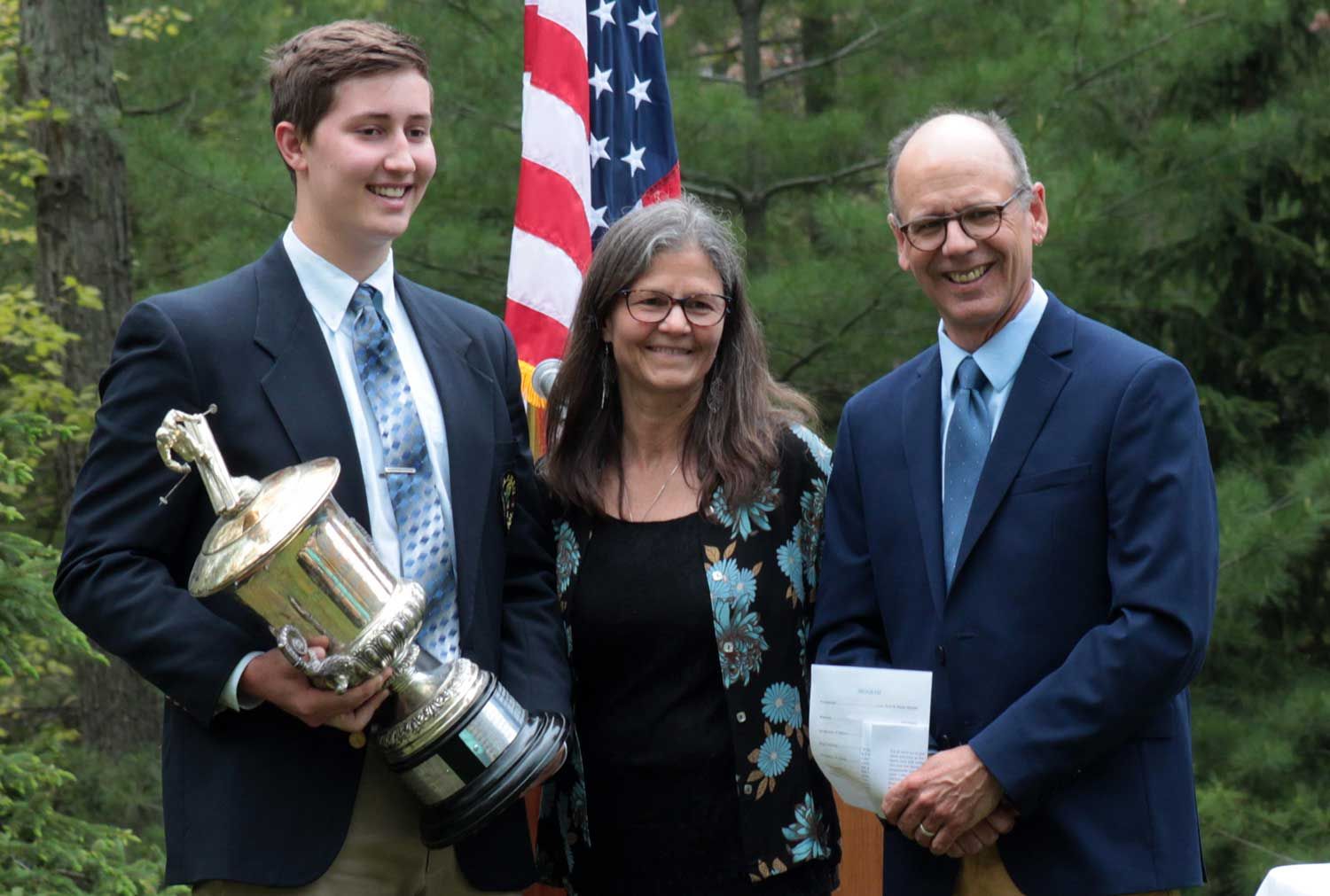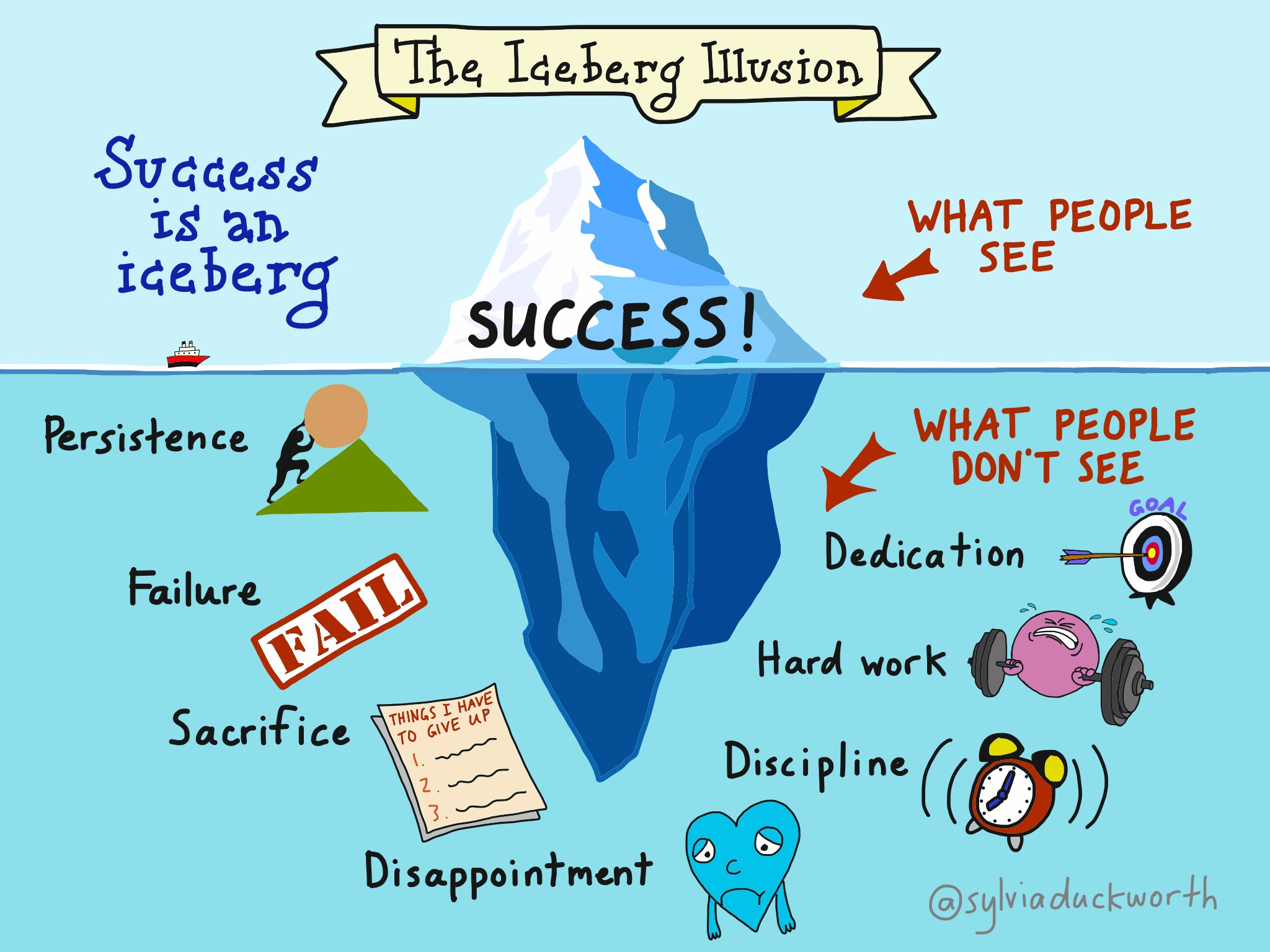
What Really Goes Into Success in High School?
ABOUT A 3 MINUTE READ –
Finding Student Success In High School
The close of another school year naturally lends itself to reflection about all that has happened over the last nine months. As students, especially seniors, and teachers transition into summer after all of the end of year celebrations, the real weight of what it took to get to the place of final achievements is felt.
Success at the end of a school year or a high school career is recognized from the outside through awards – diplomas, tassels, plaques, trophies – and by witnessing students crossing the proverbial finish line, but what it really took to achieve that success is often unseen.
A parent shared The Iceberg Illusion with us as a way to express what they see happening with their child at Leelanau.
“This made me think of the amazing things you do. I have never seen my son happier at school. Thanks to all.”
Parent – current Leelanau Student

So what does it take to “find” success in high school?
Teachers have an acute awareness of what it truly takes for individual students to find success, while students may see things a little less definitively. Through the year, students and teachers work toward the same goal from different perspectives and sometimes on different timelines.
The Iceberg Illusion of success shows not just the outcome but the process of finding success. It takes many things being done, and often being done repeatedly, for “success” to break the surface and become what can be seen above water.
Success under the surface looks like this:
Persistence –
Teachers continuously find meaningful ways to get to know each student as an individual, so they can find the best ways to connect and make a difference.
Students work to push beyond mental boundaries, old habits, and unrealistic doubts they have made for themselves or that have been put upon them by others.
Failure –
Teachers provide structure, feedback, and guidance, as well as the proper support and planning to help students learn from it when failure happens.
Students learn resilience and problem solving through failure and are supported in discovering the needed skills to move forward.
Sacrifice –
Teachers know that growth and learning happen when students are ready and this can occur at unexpected times through surprising experiences. Teachers generously embrace these teachable moments without regard for convenience, to ensure students know the importance of their learning.
Students learn that success in one thing is sometimes gained through the sacrifice of something else and that setting goals and understanding what it takes to attain them is an important part of the process.
Disappointment –
Teachers are always on the watch for bumps in the road and are ready to help identify growth opportunities through disappointment.
Students develop the understanding that disappointment often reveals what matters to us and is something that can be channeled into something positive in the future.
Dedication –
Teachers are relentless in their drive to engage, know, guide, and support each student in their own unique educational journey.
Students develop an understanding of what it takes to achieve the outcomes they want.
Hard Work –
Teachers put in the hard work to make sure their curriculum is relevant, that students are gaining both skills and knowledge, and that they model meaningful participation in the larger learning community.
Students become partners in setting the right goals, developing the right tools and establishing a supportive system for success resulting in them knowing their hard work is worth the effort.
Discipline –
Teachers work with students to develop the tools they need to use their school, personal and social time well.
Students participate in a meaningful structure based on their stage of development to become better attuned to how to effectively organize their work and time.
Ultimately, teachers find success when their students do too. They then quietly step back while their students move on into future grades or phases of life bringing with them all of the skills and knowledge they have gained through their own hard work and through guidance from their teachers.
The Iceberg Illusion was created by SYLVIA DUCKWORTH a sketchnoter and educator from Toronto, Canada.
PIQUED YOUR INTEREST? Check out our post Print vs. Digital Text In Education
Favorite Blog Posts Of 2019 | The Leelanau School
[…] PIQUED YOUR INTEREST? You might also like our post What Really Goes Into Success In Highschool? […]
Fostering Student Ownership In Learning | The Leelanau School
[…] PIQUED YOUR INTEREST? You might also like our post What Really Goes Into Success In Highschool? […]